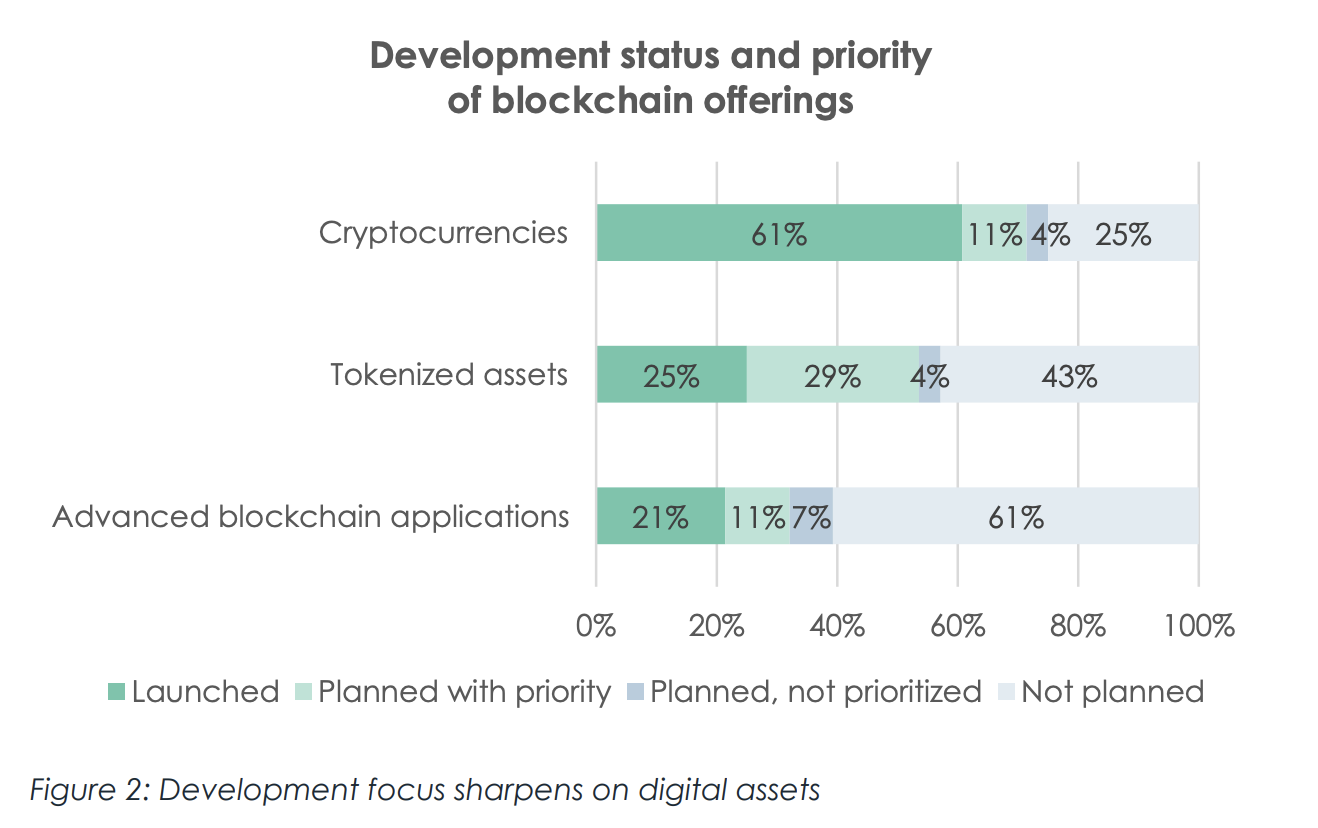Overview: The prospect of a more aggressive Federal Reserve policy has spurred a sharp sell-off in global equities and bonds and sent the dollar sharply higher. The large Asia Pacific bourses were off mostly 2%-4%. Europe’s Stoxx 600 is off 2.2%, its fifth consecutive losing session. US futures are off also. The NASDAQ was down 3.5% before the weekend and the S&P 500 fell 2.9%. The dollar rocks. The Scandis and Antipodean currencies are bearing the brunt and are off 1.0%-1.3%. Bond yields are jumping. The 10-year US Treasury yield is up seven basis points at 3.23%, while European yield are 6-13 bp higher, with the peripheral premiums widening sharply. The dollar briefly rose above JPY135 but shed some of those gains and is now up less than 0.2% against the yen. Emerging market currencies are also being beaten up. The Mexican peso, which often acts as a proxy for EM FX is off 2.2%. The South African rand’s 1.4% loss is the second largest today. Gold is reversing lower after rising briefly above $1878. It is offered now near $1855. July WTI is off $2 to around $118.55. US natgas is off 1.2%, matching the pre-weekend loss. Europe’s benchmark is around 1% firmer. With China’s re-opening stalling, iron ore dropped 3.6% today, equaling the decline over the past two sessions. July copper is down 2.1% after losing 3.6% in the past couple of sessions. July wheat is about 0.7% firmer, recouping the losses in full seen in the second half of last week.
Asia Pacific
The dollar briefly traded above the 2002 high near JPY135.15 in early turnover today. It brought the strongest objection from BOJ Governor Kuroda, who said that the recent rapid fall in the yen was undesirable and was negative for the economy by boosting uncertainty and making it difficult for businesses to plan. At the same time, the BOJ stepped up its defense of the Yield Curve Control strategy. The 10-year yield poked above the 0.25% cap. The central bank purchased about JPY1.5 trillion (~$11 bln) of bonds in its fixed-rate operation, the second largest amount since this facility began in 2016. Tomorrow, it will buy an additional JPY500 bln of 5-10-year bonds. Yields on the 30- and 40-year bonds jumped 10 bp while the 10-year yield edged up by about half of a basis point.
Still, the risk of actual, material intervention still seems modest. The LDP policy chief noted that this was not the time to intervene. Also, the US Treasury report before the weekend, which did not cite any currency manipulators, cautioned that intervention should be for exceptional circumstances only and with prior consultation. The divergence of monetary policy is understood to be the key driver. The BOJ is not ready to change its monetary policy, while US policy may turn more aggressive.
China's efforts to re-open have been set back. New Covid cases have led to a delay in the re-opening of Beijing schools that had been planned for today. In Shanghai, some restrictions have been re-introduced, including dine-in services. Separately, the divergence of monetary policy between the US and China has seen Beijing's discount on 10-year yields widen to its largest in more than a decade (more than 40 bp) and the 12-month forward points on the offshore yuan (CNH) is near -55 points, the lowest in 3 1/2 years.
The intra-session high was set near JPY135.20 before the US dollar came under selling pressure and by late morning activity in Europe was off a full yen. The yen had been sold against a wide swathe of other currencies and assets, and as those currencies and assets are sold off, the funding currency, the yen, is bought back, showing shades of its so-called safe-haven appeal. With the intraday momentum indicators stretched, look for the dollar to find better bids in North America. The low in North America ahead of the weekend was near JPY133.50. The Australian dollar has been sold through $0.7000, the (61.8%) retracement of its bounce since mid-May. There is little chart support ahead of $0.6950. The $0.7000 area may now offer resistance. The data highlight of the week is the May jobs report first thing Thursday. The market is already pricing in a strong chance of another 50 bp hike when the RBA meets on July 5. The greenback jumped to CNY6.7525, its highest level since May 19. Although it came off, it remained above the range of the last session. The pre-weekend high was about CNY6.7170. Today's low was near CNY6.7260. The PBOC set the dollar's reference rate at CNY6.7282. The median projection (Bloomberg's survey) was CNY6.7207. It was the third consecutive session the fixing was for a weaker than expected dollar.
Europe
French President Macron acknowledged that his victory in April was partly owed to votes against LePen rather than for him. That point was on display in the first round of the parliamentary elections. It appears that Macron's parliamentary majority may disappear in second round of voting on June 19. Macron's candidates appear to have secured about 25.75% of the vote and a left coalition got a fraction less (~25.65%). Le Pen secured almost 18.7%, while the conservative coalition around the Republicans, drew around 10.4%. Speculation is that if Macron loses his majority by more than a few seats he will most likely seek alliance with the Republicans.
Germany's IG Metall called for more warning strikes by steel workers beginning today. There has been no agreement after three rounds of talks. The fourth is tomorrow. The union seeks an 8.2% pay increase. The employers have offered a 4.7% increase. IG Metall is preparing for the negotiations for the two million industrial workers in Germany. IG Metall says it will seek at least a 7% pay hike over two years. If the ECB's 2% inflation target is met and labor was compensated 1.0% for productivity gains a year, that would account for 6% increase. But the ECB itself does not expect to see its inflation target met until after 2024.
The UK economy unexpectedly contracted by 0.3% in April. It was the second consecutive monthly contraction. The median forecast in Bloomberg's survey projected a 0.1% expansion after a 0.1% decline in output in March. None of the main sectors grew in April. Services output fell by 0.3%, weighed down by the unwinding of Covid medical services. Industrial output fell by 0.6%. Economists had expected a 0.3% expansion. Manufacturing tumbled 1%, amid higher energy prices. Construction output fell by 0.4%, which was slightly better than the 0.5% decline projected. Trade was less of a drag than it had been in March. The news stream is expected to improve tomorrow with the employment data. The UK labor market is one of the economic bright spots.
Meanwhile, Prime Minister Johnson is pressing forward with legislation that will allow the government to override the Brexit deal regarding Northern Ireland. The EU will not take kindly to this and will strike back and like impose trade penalties or fines. The government's measures were expected last week. The press attributed the delay to concerns that there were some concerns that it would violate international law, which in a backhanded way acknowledges the thin ice it is skating upon. Moreover, the effort to exclude the European Court of Justice, a perennial issue for the hard Brexit camp, has little to do with the mental gymnastics Johnson has insisted on that leaves Northern Ireland in the EU.
The euro looks ugly. It is the third session of a headlong plunge that began with the initial upticks in response to the ECB meeting that stalled near $1.0775. The low so far today is almost $1.0455. It has stabilized in the last few hours but has been unable to resurface above $1.05. It will be difficult to pick a bottom until at least after the FOMC meeting. Sterling stalled near $1.26 last week and finished around $1.2315 before the weekend. It has dropped another cent today to reach $1.2210. The low has been recorded in the European morning. The $1.2250 area may now offer initial resistance. The low set in the middle of last month was near $1.2155. The BOE meets Thursday, and the swaps market has about a 40% chance of a 50 bp move discounted.
America
The pre-weekend combination of strong inflation, inflation expectations, and recessionary levels of consumer sentiment did not spur a dollar sell-off because contrary to the critics, including former Treasury Secretary Summers, the Fed has not lost credibility. That is to say the market expects the Fed to become more aggressive. It sees the 75 bp rate hike that Powell confirmed last month was not under serious discussion as becoming more likely, with a slightly better than 50% chance priced at next month's meeting and a little less than a 1-in-3 chance of 75 bp move this week. The Fed funds futures have 175 bp of tightening discounted in the next three meetings. The implies a 75 move. Moreover, it leans toward a 50 bp hike in November as well. The year-end rate is now seen at nearly 3.39%. It was 2.85% a week ago.
At the same time as the average US gasoline prices pushes above $5 a gallon, the University of Michigan's survey showed inflation expectations rose to new highs of 5.4% in one-year and 3.3% in 5-10-years. The rise in the longer-term is understood as more important because while there may be short-run noise, the key is thought to be anchoring expectations. They risk becoming unhinged. The New York Fed conducts its own consumer survey, and the May results are due later today. In April, the one-year expectation slipped to 6.3% from 6.6%. The three-year outlook edged up to 3.9% from 3.7%. Of interest, the dispersion of opinion, measured by the difference between the 25th percentile and the 75th fell in the shorter period and rose in the longer.
What promises to be a busy week begins slowly. The US nor Canada, or Mexico have economic reports of note today. Brazil reports May trade figures, but is not typically a market mover, and this may be especially true today given the focus on Fed policy. Brazil's central bank meeting, like the Fed's concludes on Wednesday and a 50 bp hike in the Selic rate is expected to 13.25%. The central bank is gradually slowing the pace of hikes. Three 150 bp move has been followed by two 100 bp hikes. The swaps market sees a peak near 13.50%.
The US dollar is extending its surge against the Canadian dollar. In the middle of last week, the US dollar recorded a six-week low near CAD1.2520. In Europe today, it is pushing on CAD1.2850. We see the risk-off mood, illustrated by the precipitous drop in the S&P 500 as the main culprit. However, the Canadian premium on two-year money narrowed to less than five basis points today from near 35 bp in the middle of last week. Canadian rates have been above the US since May 6. The next important chart point is around CAD1.2865, the (61.8%) retracement objective of the greenback's slide since the May 12 high (~CAD1.3075). A move above CAD1.2900 could signal a test on last month's high. Similarly, the US dollar is surging against the Mexican peso. Last Monday, the greenback dripped below MXN19.50. Today, it reached MXN20.3670, its highest level since May 12. The dollar is above its upper Bollinger Band (~MXN20.18) for the first time since late April. The 200-day moving average is found around MXN20.4125. The high from the first half in May was set in front of MXN20.50 while the April high was closer to MXN20.6380.
Full story here Are you the author? Previous post See more for Next post
Tags: #USD,Bank of Japan,Brazil,China,Currency Movement,Featured,federal-reserve,France,Germany,intervention,newsletter,U.K.
























